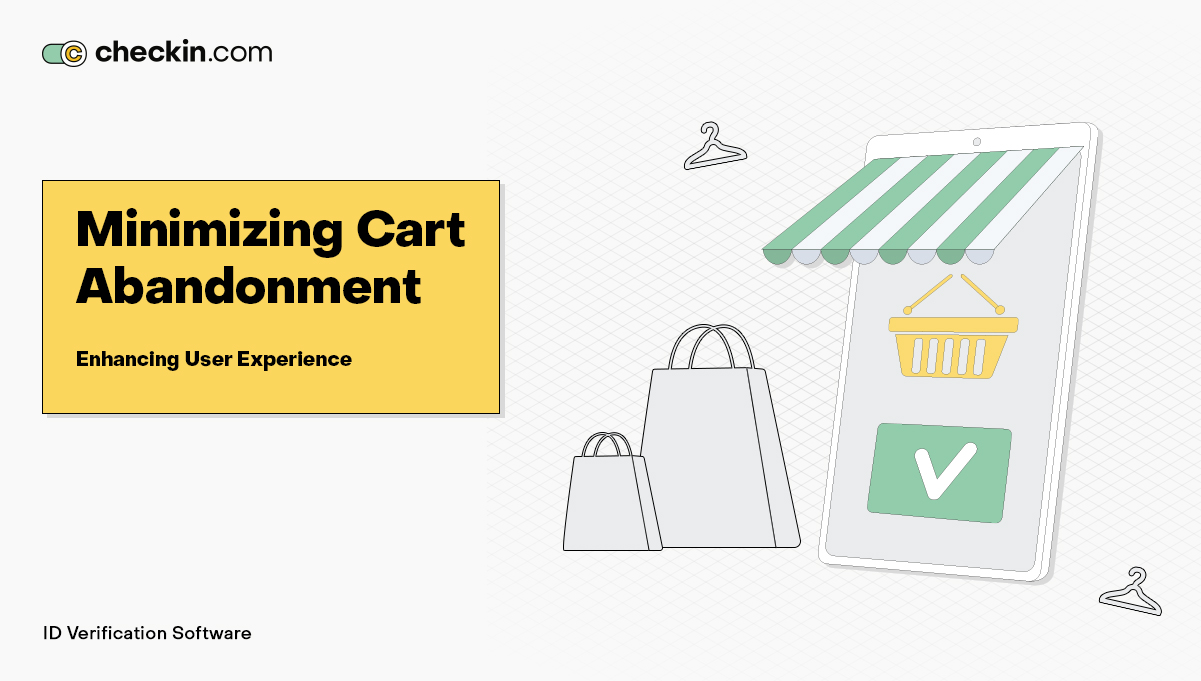
Minimizing Cart Abandonment: Enhancing User Experience in Identity Verification
5 Mar 2023
In the thriving world of e-commerce, minimizing cart abandonment rates has become a top priority for identity verification providers. With the convenience of online shopping, customers expect a seamless and user-friendly experience throughout their purchase journey.
User Experience: With the rise of e-commerce, identity verification providers need to create an easy and seamless user experience to avoid high cart abandonment rates.
To address this challenge, id verification service providers must focus on enhancing the user experience, ensuring a smooth and secure checkout process. This article explores strategies to optimize user experience in identity verification and reduce cart abandonment rates.
Understanding the Impact of Cart Abandonment
Imagine spending time carefully selecting products, adding them to your virtual shopping cart, only to abandon the purchase at the last moment. Cart abandonment is a widespread phenomenon in the e-commerce world, causing frustration for both customers and businesses. High abandonment rates lead to lost revenue and missed opportunities for growth.
The Role of User Experience in Identity Verification
Simplified Verification Processes
- Streamlined verification: Providers should simplify the verification process, eliminating unnecessary steps and reducing complexity.
- Intuitive interfaces: User-friendly interfaces guide customers through the verification process smoothly, minimizing frustration and abandonment.
Transparent Communication for Trust
- Clear security measures: Providers should communicate their robust security measures transparently to build trust with customers.
- Privacy assurances: Clearly articulate how customer data will be protected during the verification process.
Mobile Optimization
- Mobile-responsive design: Optimize the verification process for mobile devices, ensuring a seamless experience for customers shopping on smartphones and tablets.
- Mobile-friendly interfaces: Ensure the identity verification interface is user-friendly and easy to navigate on smaller screens.
Strategies for a Seamless Checkout Experience
Efficient Verification
- Speed and efficiency: Minimize the time required for verification to avoid customer impatience and cart abandonment.
- Automation: Utilize automation technologies to streamline the verification process, reducing manual effort for customers.
Personalization and Customization
- Tailored experiences: Personalize the verification process by providing options that suit individual customer preferences, such as language or identity document choices.
- Customizable interfaces: Allow customers to customize the interface settings, such as font size or color, to enhance accessibility and user comfort.
Error Prevention and Assistance
- Error detection: Implement error-detection mechanisms to help customers identify and correct mistakes during the verification process.
- Real-time assistance: Provide prompt and helpful customer support options to resolve any issues or concerns.
Enhancing Security Measures
Multi-factor Authentication
To enhance the security of the identity verification process, providers can implement multi-factor authentication methods. This involves verifying the customer’s identity using multiple factors, such as something they know (password), something they have (mobile device), or something they are (biometric data).
By implementing multi-factor authentication, providers can ensure a higher level of security and reduce the risk of unauthorized access.
Advanced Fraud Detection
Implementing advanced fraud detection mechanisms is crucial in reducing fraudulent activities and ensuring a secure user experience. Providers can leverage technologies such as artificial intelligence and machine learning to analyze patterns, detect suspicious behavior, and identify potential fraud attempts.
By proactively detecting and preventing fraud, identity verification providers can instill confidence in customers and mitigate cart abandonment risks.
Conclusion
By prioritizing user experience in identity verification, providers can effectively reduce cart abandonment rates in the fast-paced e-commerce landscape. Simplifying the verification process, fostering transparent communication, optimizing for mobile devices, and implementing efficient checkout strategies are key to creating a seamless and secure experience for customers.
By implementing these strategies, identity verification providers can enhance customer satisfaction, boost conversions, and achieve long-term success in the competitive online marketplace.
FAQ
What is cart abandonment, and why is it a concern?
Cart abandonment refers to customers leaving their online shopping carts without completing the purchase. It is a concern for businesses as it leads to lost sales and missed revenue opportunities.
How can identity verification providers improve the user experience?
Providers can enhance the user experience by simplifying the verification process, ensuring transparent communication, optimizing for mobile devices, and focusing on efficient and error-free checkout experiences.
Why is mobile optimization important for identity verification?
Mobile optimization is vital because an increasing number of customers shop using smartphones and tablets. By optimizing for mobile devices, providers offer a seamless and user-friendly experience to mobile shoppers, reducing cart abandonment rates.
How does multi-factor authentication enhance security in identity verification?
Multi-factor authentication adds an extra layer of security by requiring customers to provide multiple forms of identification. This significantly reduces the risk of unauthorized access and strengthens the overall security of the verification process.
What is advanced fraud detection, and why is it important for identity verification providers?
Advanced fraud detection involves utilizing cutting-edge technologies to identify and prevent fraudulent activities. By implementing such measures, identity verification providers can effectively mitigate the risk of fraud, protect customer data,